541 low relevance results shown for 'Red'. Prev |1|2|3|4|5|6|7|8|9|10|11|12|13|14|15|16|17|18|19|20|21|22 | Next | View 100 per page
Showing low relevance matches only. Return to normal search results
DNA - The transmission of heritable characteristics from one generation to the next involves DNA and genes ACSSU097 Year 6 Physical Sciences
Electrical Circuits - Electrical energy can be transferred and transformed in electrical circuits and can be generated from a range of sources ACSSU115 Year 7 Earth and Space Sciences
Earth Moon Sun - Predictable phenomena on Earth, including seasons and eclipses, are caused by the relative positions of the sun, Earth and the moon ACSSU229 Year 10 Physical Sciences
Forces and Motion - The motion of objects can be described and predicted using the laws of physics ACSBL029 Year 11 Biodiversity and the interconnectedness of life
Ecosystem dynamics - Models of ecosystem interactions (for example, food webs, successional models) can be used to predict the impact of change and are based on interpretation of and extrapolation from sample data (for example, data derived from ecosystem surveying techniques ACSBL085 Year 12 Heredity and continuity of life
DNA genes and the continuity of life - Frequencies of genotypes and phenotypes of offspring can be predicted using probability models, including Punnett squares, and by taking into consideration patterns of inheritance, including the effects of dominant, autosomal and sex-linked alleles and mu ACSBL090 Year 12 Heredity and continuity of life
Continuity of life on Earth - Natural selection occurs when selection pressures in the environment confer a selective advantage on a specific phenotype to enhance its survival and reproduction; this results in changes in allele frequency in the gene pool of a population ACSBL091 Year 12 Heredity and continuity of life
Continuity of life on Earth - In additional to environmental selection pressures, mutation, gene flow and genetic drift can contribute to changes in allele frequency in a population gene pool and results in microevolutionary change ACSCH056 Year 11 Molecular interactions and reactions
Intermolecular forces and gases - The shapes of molecules can be explained and predicted using three dimensional representations of electrons as charge clouds and using valence shell electron pair repulsion (VSEPR) theory ACSCH073 Year 11 Molecular interactions and reactions
Rates of chemical reactions - Catalysts, including enzymes and metal nanoparticles, affect the rate of certain reactions by providing an alternative reaction pathway with a reduced activation energy, hence increasing the proportion of collisions that lead to a chemical change ACSCH091 Year 12 Equilibrium acids and redox reactions
Chemical equilibrium systems - Over time, physical changes and reversible chemical reactions reach a state of dynamic equilibrium in a closed system, with the relative concentrations of products and reactants defining the position of equilibrium ACSCH096 Year 12 Equilibrium acids and redox reactions
Chemical equilibrium systems - Equilibrium position can be predicted qualitatively using equilibrium constants ACSCH097 Year 12 Equilibrium acids and redox reactions
Chemical equilibrium systems - Acids are substances that can act as proton (hydrogen ion) donors and can be classified as monoprotic or polyprotic depending on the number of protons donated by each molecule of the acid ACSCH098 Year 12 Equilibrium acids and redox reactions
Chemical equilibrium systems - The strength of acids is explained by the degree of ionisation at equilibrium in aqueous solution, which can be represented with chemical equations and equilibrium constants (Ka) ACSCH099 Year 12 Equilibrium acids and redox reactions
Chemical equilibrium systems - The relationship between acids and bases in equilibrium systems can be explained using the Brønsted Lowry model and represented using chemical equations that illustrate the transfer of hydrogen ions ACSCH100 Year 12 Equilibrium acids and redox reactions
Chemical equilibrium systems - The pH scale is a logarithmic scale and the pH of a solution can be calculated from the concentration of hydrogen ions; Kw can be used to calculate the concentration of hydrogen ions from the concentration of hydroxide ions in a solution ACSCH101 Year 12 Equilibrium acids and redox reactions
Chemical equilibrium systems - Acidbase indicators are weak acids or bases where the acidic form is of a different colour to the basic form ACSCH102 Year 12 Equilibrium acids and redox reactions
Chemical equilibrium systems - Volumetric analysis methods involving acidbase reactions rely on the identification of an equivalence point by measuring the associated change in pH, using chemical indicators or pH meters, to reveal an observable end point ACSCH103 Year 12 Equilibrium acids and redox reactions
Oxidation and reduction - A range of reactions, including displacement reactions of metals, combustion, corrosion, and electrochemical processes, can be modelled as redox reactions involving oxidation of one substance and reduction of another substance ACSCH104 Year 12 Equilibrium acids and redox reactions
Oxidation and reduction - Oxidation can be modelled as the loss of electrons from a chemical species, and reduction can be modelled as the gain of electrons by a chemical species; these processes can be represented using half equations ACSCH106 Year 12 Equilibrium acids and redox reactions
Oxidation and reduction - The relative strength of oxidising and reducing agents can be determined by comparing standard electrode potentials ACSCH107 Year 12 Equilibrium acids and redox reactions
Oxidation and reduction - Electrochemical cells, including galvanic and electrolytic cells, consist of oxidation and reduction half reactions connected via an external circuit that allows electrons to move from the anode (oxidation reaction) to the cathode (reduction reaction) ACSCH108 Year 12 Equilibrium acids and redox reactions
Oxidation and reduction - Galvanic cells, including fuel cells, generate an electrical potential difference from a spontaneous redox reaction; they can be represented as cell diagrams including anode and cathode halfequations ACSCH110 Year 12 Equilibrium acids and redox reactions
Oxidation and reduction - Cell potentials at standard conditions can be calculated from standard electrode potentials; these values can be used to compare cells constructed from different materials ACSCH130 Year 12 Structure synthesis and design
Properties and structure of organic materials - Data from analytical techniques, including mass spectrometry, xray crystallography and infrared spectroscopy, can be used to determine the structure of organic molecules, often using evidence from more than one technique ACSPH040 Year 11 Thermal nuclear and electrical physics
Electrical circuits - The energy available to charges moving in an electrical circuit is measured using electric potential difference, which is defined as the change in potential energy per unit charge between two defined points in the circuit ACSPH041 Year 11 Thermal nuclear and electrical physics
Electrical circuits - Energy is required to separate positive and negative charge carriers; charge separation produces an electrical potential difference that can be used to drive current in circuits ACSPH061 Year 11 Linear Motion and Waves
Linear motion and force - Representations, including graphs and vectors, and/or equations of motion, can be used qualitatively and quantitatively to describe and predict linear motion ACSPH064 Year 11 Linear Motion and Waves
Linear motion and force - Momentum is a property of moving objects; it is conserved in a closed system and may be transferred from one object to another when a force acts over a time interval ACSPH065 Year 11 Linear Motion and Waves
Linear motion and force - Energy is conserved in isolated systems and is transferred from one object to another when a force is applied over a distance; this causes work to be done and changes to kinetic and/or potential energy of objects ACSPH073 Year 11 Linear Motion and Waves
Waves - A mechanical system resonates when it is driven at one of its natural frequencies of oscillation; energy is transferred efficiently into systems under these conditions ACSPH076 Year 11 Linear Motion and Waves
Waves - A wave model explains a wide range of lightrelated phenomena including reflection, refraction, total internal reflection, dispersion, diffraction and interference; a transverse wave model is required to explain polarisation ACSPH021 Year 11 Thermal nuclear and electrical physics
Heating processes - Change of state involves internal energy changes to form or break bonds between atoms or molecules; latent heat is the energy required to be added to or removed from a system to change the state of the system
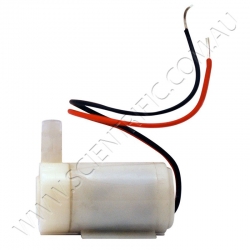


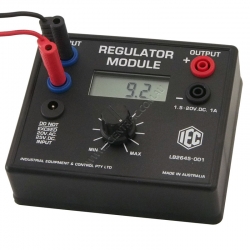
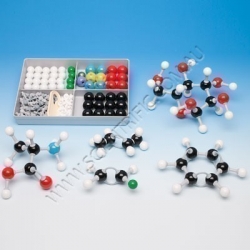





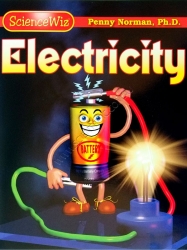
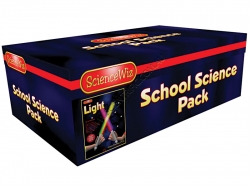


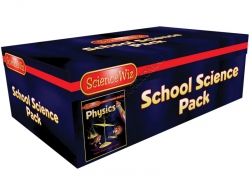
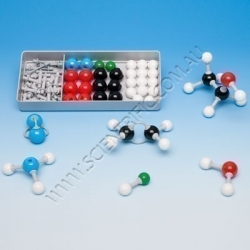
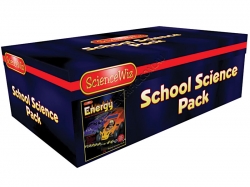
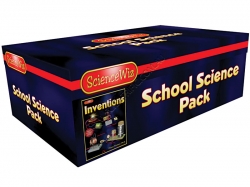

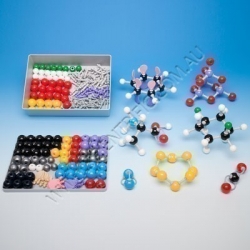
541 low relevance results shown for 'Red'. Prev |1|2|3|4|5|6|7|8|9|10|11|12|13|14|15|16|17|18|19|20|21|22 | Next | View 100 per page
Showing low relevance matches only. Return to normal search results
Curriculum resources related to 'Red'
ACSSU184 Year 10 Biological SciencesDNA - The transmission of heritable characteristics from one generation to the next involves DNA and genes ACSSU097 Year 6 Physical Sciences
Electrical Circuits - Electrical energy can be transferred and transformed in electrical circuits and can be generated from a range of sources ACSSU115 Year 7 Earth and Space Sciences
Earth Moon Sun - Predictable phenomena on Earth, including seasons and eclipses, are caused by the relative positions of the sun, Earth and the moon ACSSU229 Year 10 Physical Sciences
Forces and Motion - The motion of objects can be described and predicted using the laws of physics ACSBL029 Year 11 Biodiversity and the interconnectedness of life
Ecosystem dynamics - Models of ecosystem interactions (for example, food webs, successional models) can be used to predict the impact of change and are based on interpretation of and extrapolation from sample data (for example, data derived from ecosystem surveying techniques ACSBL085 Year 12 Heredity and continuity of life
DNA genes and the continuity of life - Frequencies of genotypes and phenotypes of offspring can be predicted using probability models, including Punnett squares, and by taking into consideration patterns of inheritance, including the effects of dominant, autosomal and sex-linked alleles and mu ACSBL090 Year 12 Heredity and continuity of life
Continuity of life on Earth - Natural selection occurs when selection pressures in the environment confer a selective advantage on a specific phenotype to enhance its survival and reproduction; this results in changes in allele frequency in the gene pool of a population ACSBL091 Year 12 Heredity and continuity of life
Continuity of life on Earth - In additional to environmental selection pressures, mutation, gene flow and genetic drift can contribute to changes in allele frequency in a population gene pool and results in microevolutionary change ACSCH056 Year 11 Molecular interactions and reactions
Intermolecular forces and gases - The shapes of molecules can be explained and predicted using three dimensional representations of electrons as charge clouds and using valence shell electron pair repulsion (VSEPR) theory ACSCH073 Year 11 Molecular interactions and reactions
Rates of chemical reactions - Catalysts, including enzymes and metal nanoparticles, affect the rate of certain reactions by providing an alternative reaction pathway with a reduced activation energy, hence increasing the proportion of collisions that lead to a chemical change ACSCH091 Year 12 Equilibrium acids and redox reactions
Chemical equilibrium systems - Over time, physical changes and reversible chemical reactions reach a state of dynamic equilibrium in a closed system, with the relative concentrations of products and reactants defining the position of equilibrium ACSCH096 Year 12 Equilibrium acids and redox reactions
Chemical equilibrium systems - Equilibrium position can be predicted qualitatively using equilibrium constants ACSCH097 Year 12 Equilibrium acids and redox reactions
Chemical equilibrium systems - Acids are substances that can act as proton (hydrogen ion) donors and can be classified as monoprotic or polyprotic depending on the number of protons donated by each molecule of the acid ACSCH098 Year 12 Equilibrium acids and redox reactions
Chemical equilibrium systems - The strength of acids is explained by the degree of ionisation at equilibrium in aqueous solution, which can be represented with chemical equations and equilibrium constants (Ka) ACSCH099 Year 12 Equilibrium acids and redox reactions
Chemical equilibrium systems - The relationship between acids and bases in equilibrium systems can be explained using the Brønsted Lowry model and represented using chemical equations that illustrate the transfer of hydrogen ions ACSCH100 Year 12 Equilibrium acids and redox reactions
Chemical equilibrium systems - The pH scale is a logarithmic scale and the pH of a solution can be calculated from the concentration of hydrogen ions; Kw can be used to calculate the concentration of hydrogen ions from the concentration of hydroxide ions in a solution ACSCH101 Year 12 Equilibrium acids and redox reactions
Chemical equilibrium systems - Acidbase indicators are weak acids or bases where the acidic form is of a different colour to the basic form ACSCH102 Year 12 Equilibrium acids and redox reactions
Chemical equilibrium systems - Volumetric analysis methods involving acidbase reactions rely on the identification of an equivalence point by measuring the associated change in pH, using chemical indicators or pH meters, to reveal an observable end point ACSCH103 Year 12 Equilibrium acids and redox reactions
Oxidation and reduction - A range of reactions, including displacement reactions of metals, combustion, corrosion, and electrochemical processes, can be modelled as redox reactions involving oxidation of one substance and reduction of another substance ACSCH104 Year 12 Equilibrium acids and redox reactions
Oxidation and reduction - Oxidation can be modelled as the loss of electrons from a chemical species, and reduction can be modelled as the gain of electrons by a chemical species; these processes can be represented using half equations ACSCH106 Year 12 Equilibrium acids and redox reactions
Oxidation and reduction - The relative strength of oxidising and reducing agents can be determined by comparing standard electrode potentials ACSCH107 Year 12 Equilibrium acids and redox reactions
Oxidation and reduction - Electrochemical cells, including galvanic and electrolytic cells, consist of oxidation and reduction half reactions connected via an external circuit that allows electrons to move from the anode (oxidation reaction) to the cathode (reduction reaction) ACSCH108 Year 12 Equilibrium acids and redox reactions
Oxidation and reduction - Galvanic cells, including fuel cells, generate an electrical potential difference from a spontaneous redox reaction; they can be represented as cell diagrams including anode and cathode halfequations ACSCH110 Year 12 Equilibrium acids and redox reactions
Oxidation and reduction - Cell potentials at standard conditions can be calculated from standard electrode potentials; these values can be used to compare cells constructed from different materials ACSCH130 Year 12 Structure synthesis and design
Properties and structure of organic materials - Data from analytical techniques, including mass spectrometry, xray crystallography and infrared spectroscopy, can be used to determine the structure of organic molecules, often using evidence from more than one technique ACSPH040 Year 11 Thermal nuclear and electrical physics
Electrical circuits - The energy available to charges moving in an electrical circuit is measured using electric potential difference, which is defined as the change in potential energy per unit charge between two defined points in the circuit ACSPH041 Year 11 Thermal nuclear and electrical physics
Electrical circuits - Energy is required to separate positive and negative charge carriers; charge separation produces an electrical potential difference that can be used to drive current in circuits ACSPH061 Year 11 Linear Motion and Waves
Linear motion and force - Representations, including graphs and vectors, and/or equations of motion, can be used qualitatively and quantitatively to describe and predict linear motion ACSPH064 Year 11 Linear Motion and Waves
Linear motion and force - Momentum is a property of moving objects; it is conserved in a closed system and may be transferred from one object to another when a force acts over a time interval ACSPH065 Year 11 Linear Motion and Waves
Linear motion and force - Energy is conserved in isolated systems and is transferred from one object to another when a force is applied over a distance; this causes work to be done and changes to kinetic and/or potential energy of objects ACSPH073 Year 11 Linear Motion and Waves
Waves - A mechanical system resonates when it is driven at one of its natural frequencies of oscillation; energy is transferred efficiently into systems under these conditions ACSPH076 Year 11 Linear Motion and Waves
Waves - A wave model explains a wide range of lightrelated phenomena including reflection, refraction, total internal reflection, dispersion, diffraction and interference; a transverse wave model is required to explain polarisation ACSPH021 Year 11 Thermal nuclear and electrical physics
Heating processes - Change of state involves internal energy changes to form or break bonds between atoms or molecules; latent heat is the energy required to be added to or removed from a system to change the state of the system
Products related to 'Red'

KidWind Mini Water Pump with Tubing
Last two future stock will be sold as KW-PUMP
KIDWIND MINI WATER PUMP WITH TUBING
The KidWind low voltage water pump with tubing is a great way to demonstrate and make visible power output from KidWind wind and solar kits. It makes comparing different turbine designs easy; simply measure how high different turbines c...
Order code: KWH0016

KidWind Gear Set with Spool
KIDWIND GEAR SET WITH SPOOL
Experiment with gear ratios on your wind turbine or other small projects. Adding gears to your turbine can greatly increase the generator RPM giving you higher power output. The small 8-tooth gear will fit on 2mm driveshafts that are found on l...
Order code: KWH0046


KidWind Drivetrain Set
KIDWIND DRIVETRAIN SET
Connect a wind turbine hub to a nacelle with a drivetrain set.
The KidWind Drivetrain Set features the hex driveshaft, Hub Quick Connect, hex locks and wooden spool used in the KWA0012 Advanced Wind Experiment Kit. These materials can be ver...
Order code: KWH0281-1

IEC Voltage Regulator
IEC VOLTAGE REGULATOR
The IEC digital Regulator Module is a small but useful device that can be connected to any AC or DC power source and will convert the AC or unfiltered DC to a smooth, adjustable, metered and regulated output of 1.2 to 20V DC at 1A for electronic stud...
Order code: LB2645-001P

Molymod Organic Student Set
MOLYMOD ORGANIC STUDENT SET.
The MMS-008 molecular model set contains 53 colour coded atoms and 64 links in a storage box. The set provides students with a hands-on activity to visually demonstrate organic molecules, empirical formula representations, organic structures a...
Order code: MMS-008

MacGyver Windmill STEM Kit for 10 Windmills
MACGYVER WINDMILL STEM KIT BUILDS 10 WINDMILLS.
Use common household materials to build a windmill and experiment with wind power. Explore the engineering behind blade design and windmill construction.
This kit contains enough materials for 10-30 students to build 10 w...
Order code: SC1160-10

IEC Electricity Kit AC/DC Theory Standard Kit
IEC STANDARD ELECTRICITY KIT WITH MAGNETIC FIELD DEMONSTRATORS
The IEC Standard Electricity Kit contains all the components necessary to perform a wide range of important basic experiments with electricity. Students will gain hands-on experience with electric circuits, sw...
Order code: EM1763-001

IEC Electricity Kit Advanced
IEC ADVANCED ELECTRICITY KIT WITH SIGNAL & MOTOR/GENERATORS
The IEC Advanced Electricity Kit with signal generator and hand motor/generator contains all the components necessary to perform a wide range of important experiments with electricity. Students will gain hands-on...
Order code: EM1763-010

MacGyver Windmill STEM Kit for 20 Windmills
MACGYVER WINDMILL STEM KIT BUILDS 20 WINDMILLS.
Use common household materials to build a windmill and experiment with wind power. Explore the engineering behind blade design and windmill construction.
This kit contains enough materials for 20-60 students to build 20 w...
Order code: SC1160-20

IEC Electricity Kit Advanced
IEC ADVANCED ELECTRICITY KIT WITH SIGNAL & MOTOR/GENERATORS & HODSON MOTORS
The IEC Advanced Electricity Kit with signal generator, hand motor/generator and Hodson motor kit contains all the components necessary to perform a wide range of important experiments with electr...
Order code: EM1763-020

ScienceWiz Electricity Kit Sample
This ScienceWiz™ Kit enables a student to explore and develop a fundamental understanding of the key concepts of electricity while building a foundation for analytical thinking. Supplied in a resealable plastic bag
For ages 5-12.
Note: One 1.5V size D battery is ...
Order code: SCW9900-S

ScienceWiz Teacher 6 Pack Light
This ScienceWiz™ Teacher's Pack includes enough equipment for 6 students to explore and develop a fundamental understanding of the key concepts of light while building a foundation for analytical thinking. Comes in a specially designed box for easy storage with compartments fo...
Order code: SCW9902
ScienceWiz Light Kit Sample
This ScienceWiz™ Sample Kit enables a student to explore and develop a fundamental understanding of the key concepts of light while building a foundation for analytical thinking. Supplied in a re-sealable plastic bag.
For ages 5-12.
Note: One 1.5V size D battery i...
Order code: SCW9902-S

ScienceWiz Teacher 6 Pack Chemistry
Candle making, squirting water, freezing, thawing, glop and mud pie experiments -- things every student should do to explore the matter of matter. This ScienceWiz™ kit deliberately relates and explains favourite childhood activities to chemistry. The importance of this to lat...
Order code: SCW9904
ScienceWiz Chemistry Kit Sample
Candle making, squirting water, freezing, thawing, glop and mud pie experiments -- things every student should do to explore the matter of matter. This ScienceWiz™ kit deliberately relates and explains favourite childhood activities to chemistry. The importance of this to lat...
Order code: SCW9904-S

Molymod Biochemistry Student Set
A genuine Molymod® product NOT a cloned look-a-like.
Supplied in a sturdy 4 compartment plastic box with comprehensive illustrated instructions. Contains a total of 72 'atoms' plus links and a link remover tool as listed below:
12 x Carbon, 4-holes tetrahedral, black
...
Order code: MMS-010

ScienceWiz Teacher 6 Pack Physics
This ScienceWiz™ kit introduces the concepts of inertia, the laws of motion, mass, force and weight, velocity and acceleration, circular motion and centripetal force. Concepts are explored with time tested experiments and highly visual illustrations.
This Teacher's Pack inc...
Order code: SCW9912
ScienceWiz Physics Kit Sample
This ScienceWiz™ kit introduces the concepts of inertia, the laws of motion, mass, force and weight, velocity and acceleration, circular motion and centripetal force. Concepts are explored with time tested experiments and highly visual illustrations.
This sample kit include...
Order code: SCW9912-S

Molymod Elementary Organic Set
A genuine Molymod® product NOT a cloned look-a-like.
Supplied in a sturdy 2 compartment plastic box. Contains a total of 30 'atoms' plus links as listed below:
14 x Hydrogen, 1-hole, white
6 x Carbon, 4-holes tetrahedral, black
2 x Nitrogen, 4-holes tetrahedral, blue...
Order code: MMS-015

ScienceWiz Teacher 6 Pack Energy
Discover what energy is, how we make it now and the choices awaiting us in the future. Learn about carbon emissions and climate change. This ScienceWiz™ Teacher's Pack includes enough equipment for 6 students to explore and develop a fundamental understanding of the key concep...
Order code: SCW9905
ScienceWiz Energy Kit Sample
Discover what energy is, how we make it now and the choices awaiting us in the future. Learn about carbon emissions and climate change. This ScienceWiz™ kit enables a student to explore and develop a fundamental understanding of the key concepts of energy while building a foun...
Order code: SCW9905-S

ScienceWiz Teacher 6 Pack Inventions
The ScienceWiz™ Inventions kit allows students to build models of inventions made with coils from the 19th and early 20th century to explore basic electronic components and the fundamentals of electromagnetism. Step-by-step 3D directions and the use of everyday materials bring...
Order code: SCW9903
ScienceWiz Inventions Kit Sample
The ScienceWiz™ Inventions kit allows students to build models of inventions made with coils from the 19th and early 20th century and to explore basic electronic components and the fundamentals of electromagnetism. Step-by-step 3D directions and the use of everyday materials b...
Order code: SCW9903-S

Scientrific Remagnetiser
Designed, manufactured by and only available from Scientrific. The remagnetiser has a 'Super' neodymium iron boron magnet encased in a heavy duty plastic handle which overcomes the problems of chipping and magnet separation when using a bare super magnet.
With directions to ea...
Order code: SC1008

Molymod Organic/Inorganic Teachers Set - 108 Atoms
A genuine Molymod® product NOT a cloned look-a-like.
Supplied in a sturdy plastic box with product information and instructions for building over 30 molecules. Contains a total of 106 'atoms' plus links as listed below.
Atoms - 108:
14 x Carbon, 4-holes tetra...
Order code: MMS-004
541 low relevance results shown for 'Red'. Prev |1|2|3|4|5|6|7|8|9|10|11|12|13|14|15|16|17|18|19|20|21|22 | Next | View 100 per page



 ,
,